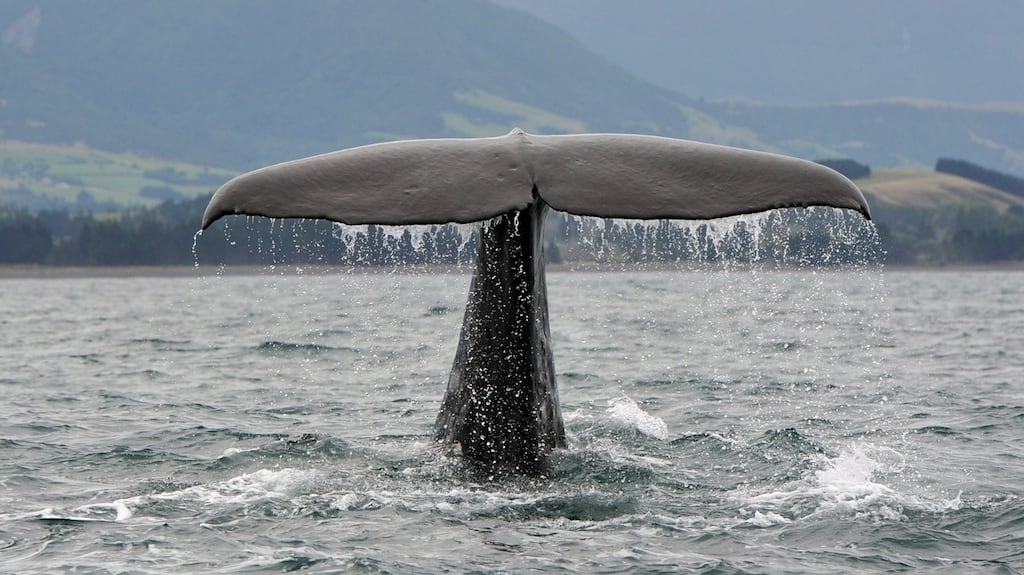The resumption of whale killing by the Japanese has focused attention on a tradition that goes back centuries. In Japan, whale meat is valued as a delicacy and a source of protein.
However, in the 18“Wounded whales could be dangerous, threshing about, charging. Their huge tails could come slapping down on boats and rowers.” photograph: iStockth and 19th centuries whales were hunted in the western world primarily because they were a source of the oil that lit lamps and lubricated machinery.
Nowhere was this enterprise more important than in the ports of New England on the east coast of the United States. They had a strong seafaring tradition and an expertise in ship building.
At the start, whales were hunted in small craft that put out from the shore.
However, by the 18th century whaling had become a lucrative deep-sea industry. Voyages sometimes lasted for years at a time as whalers travelled great distances to the South Pacific region.
By the 1830s, the US had become the pre-eminent whaling nation.
Between 1800 and 1860, 10,000 men manned the hundreds of ships. A significant proportion of crews were African-Americans, some fleeing from the slavery of the Confederate States.
The port of New Bedford, Massachusetts, became the vibrant hub of the industry. The harbour hummed with activity and movement as ships departed and others returned after long and often hazardous voyages. Many had hunted sperm whales in the southern oceans, their ships’ holds full of barrels of valuable oil.
Whaling in that era was a tough, rough and extremely dangerous business. When a whale surfaced it often sprayed a jet of water into the air from its blowhole. The shout “There she blows” went up, the small boats were launched and rowed vigorously towards the prey.
The harpoonist, a man of great skill and strength of arm, stood in the prow, waiting for the precise second to strike. When the big barbed harpoon speared into the mammal the thick rope attached to it played out. Then the whaleboat was often taken on what was called a Nantucket Sleigh-Ride as the whale plunged away at speed, dragging the boat behind it. It often took two hours before it tired and the whalers were able to kill it.
But wounded whales could be dangerous, threshing about, charging. Their huge tails could come slapping down on boats and rowers. Sailors were sometimes injured or killed.
One of the most enthralling descriptions of this high-risk hunting came from the pen of Herman Melville in his classic novel Moby-Dick. That was the name of the great white whale that is obsessively hunted by Captain Ahab. When he eventually tries to kill it the whale wins the battle, buffeting and sinking the ship with the loss of life of Ahab and all on board except the survivor who tells the epic story.
Melville, who was born in New York, embarked on a whale ship in 1841 and spent three adventurous years in the Pacific Ocean. It seems he got the idea for his enduring book from reading about the fate in 1820 of a US whaling ship, the Essex. In the Pacific it was charged and smashed by an enraged bull sperm whale. The crew managed to escape in their small whaleboats but they were many miles from land. Several died during the next harrowing 90 days, before the skeletal survivors were picked up off the coast of South America.
When the third film version of Moby Dick (with no hyphen) was made in 1954, the director John Houston chose the waterfront at Youghal to stand in for that of New Bedford, that had once called itself “The City that Lit the World.”
The role of Ahab was played by Gregory Peck. The part of Flask, the third mate, went to Seamus Kelly who took a sabbatical from producing his highly entertaining Quidnunc column for the Irishman’s Diary in this newspaper.
It can be said that Youghal made good use of its association with the film, with an imaginative yearly Moby Dick festival that features a huge rubber whale.
New Bedford itself went into a steep decline when the introduction of kerosene, or paraffin, began to replace whale oil in the mid-19th century.
Today, however, its Whaling National Historic Site and Whaling Museum attracts tens of thousands of visitors to experience something of a by-gone enterprise that held excitement, hardship and danger in equal measure.









